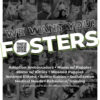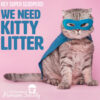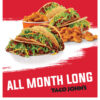When the word “artist” is forced away and replaced with “designer,” I’m left with a hole in my gut that grumbles about something very much missing here. Why? Human beings have long sought structure in our visual lives. The design mind must see all and constantly question her understanding. She must have reason behind every stroke and serif, every grid, every color. She must be resourceful, conniving, ever-feeding. She must be exhausted. How many times must an idea be simplified until it’s just like everything else? How many color schemes must be dragged from Kuler because color theory is just too complicated? How many mock-up PSD files must be downloaded before one becomes part of that In-Designer Crowd? How many Behance likes?
Stop.
It’s not that complicated.
It’s not that simple, either. I am not a graphic designer. I am a communicator, an advocate, a voice for those who have no one else to speak for them. I want truth, even if it hurts. How can design skills be used to make the world a better place? Scott Ewen of Emigre once said, “Designers make the world’s most beautiful trash.” I think today’s idea of design is so basic that it’s become purely visual. Businesses understand they need a logo. Some don’t understand they need one with some thought behind it. A few quick lines or letters in Illustrator and magically, that brand appears. We have this fascination with shape and color, form and texture. But most understand purely visual design is insufficient. Art is allowed to confuse the viewer. Design is expressly forbidden to.
So, we must weigh the message. Whatever communication the maker intends to the viewer, how well that communication is received and translated should logically measure the level of design success. Good design is not asking Google or Pinterest for ideas. It’s not playing with letterforms until one creeps into the other just right. It’s not picking the chosen spring and fall color lineups, new trending fonts, or rule-breakers that became the norm. Uniformity is dull. Functional is boring. Sameness is safe and uninspiring. People are like sheep, and the instinct to herd is so dominant it’s just our default position. We avoid risk because we don’t want to get eaten.
If we actually were sheep, we’d have the perfect excuse. Since we’re higher on the food chain, now more than ever we have a social responsibility to provide something of value to this overwhelmingly visual world of ours. I get that design has a problem-solving function. There is a cultural and aesthetic dimension though, and here is where we blur the line between art and design. We don’t ask artists to suppress their instinct for self-expression. Like it or not, a little bit of my soul is invested in every work I create. That’s not to say that design is art, but is design not inspired by art?
How might we approach design, then? There is a human element, some combination of gut reacting and intuitive thinking that imbeds itself in the observer’s brain. In order to be memorable, one must be different. In order to be different, one must be resourceful. A short video comes to mind. It starts with a young man, going out of his way for others throughout the day. He ducks a gutter of rain, only to place a plant in the water’s flow. He has a meal, but shares a large hunk of meat with a stray dog. He helps a vendor push a cart up a curb. He gives a dollar to a homeless family. We follow the man for a few more days, and each time he repeats his kind actions until one day, the little girl from the homeless family isn’t there. His look of concern changes to delight as she rounds the corner in her school outfit. The two minute ad is for life insurance. The whole time, it never felt like a commercial.
Great design creeps into our minds in much the same way. A compelling message isn’t just about using the right colors and typography. There is a social balance within the message, and awareness of that emotional connection becomes a powerful tool. With compelling vision, passion, and committment, design is no longer a chore. We must push the boundaries of our industry. We have too many rules and conventions, and we feel far too safe within them. If everyone is following the same standards of design, we’re back to the herd movement. I, for one, am not interested in practicing my sheep skills. I seek inspiration by any means necessary. I’m not interested in good or bad design. I want to be involved in work that shakes the ground beneath my feet. Now is the time to make work that matters. Whether I identify as an artist, writer, designer, or what-have-you, the piece must ultimately speak for itself. I can shape the monologue as much as I’m able, but when I release it to an audience, it becomes a conversation.






